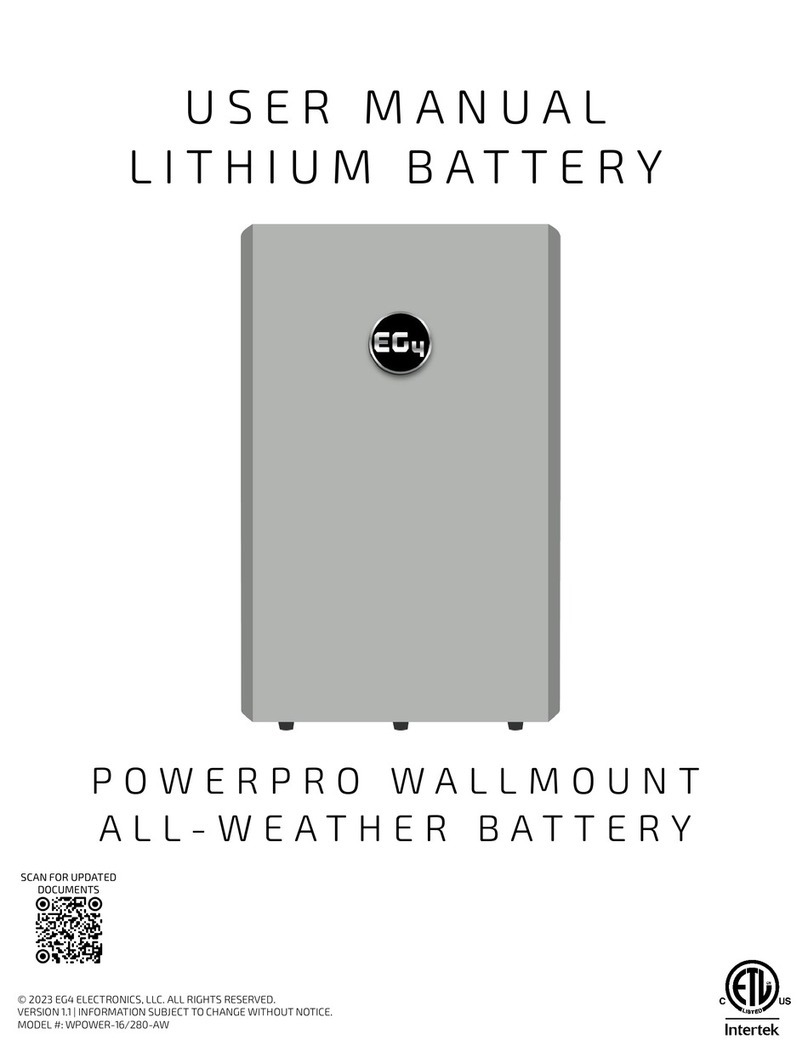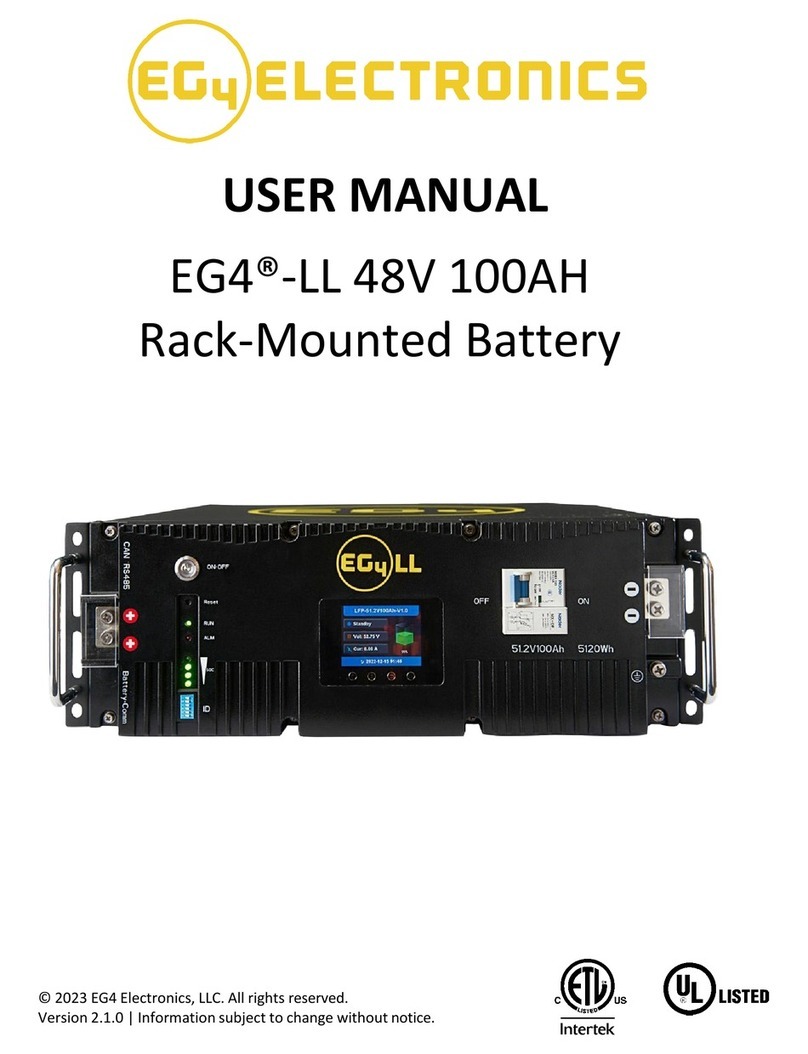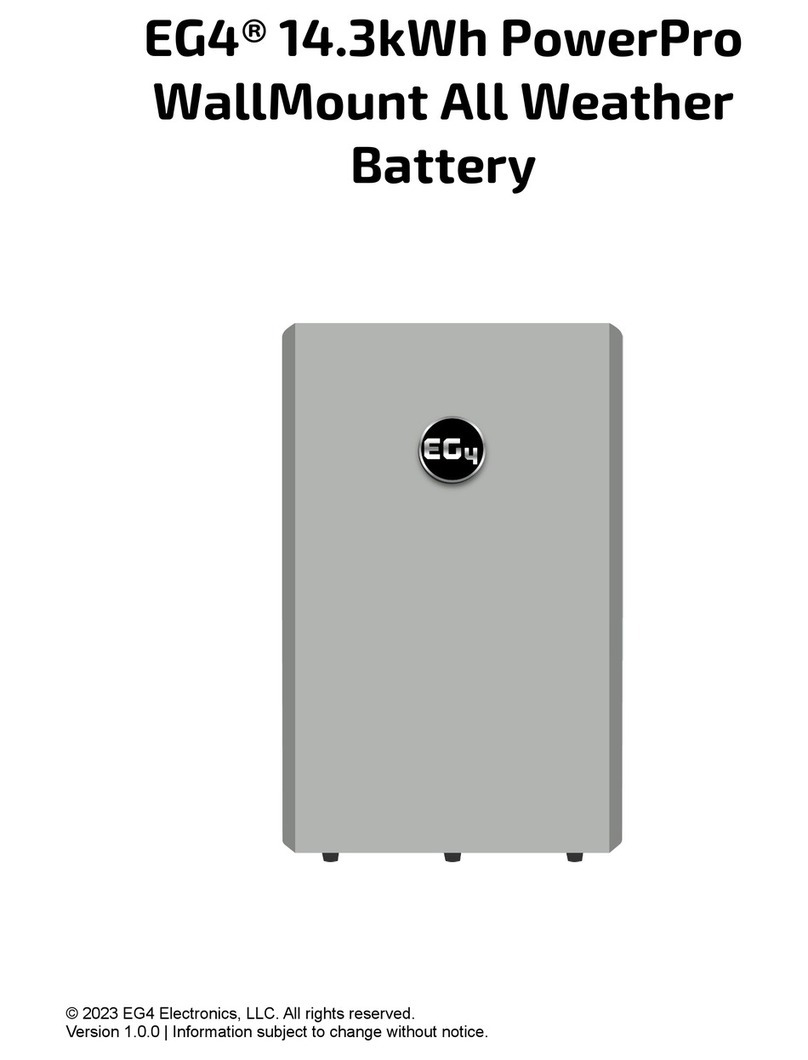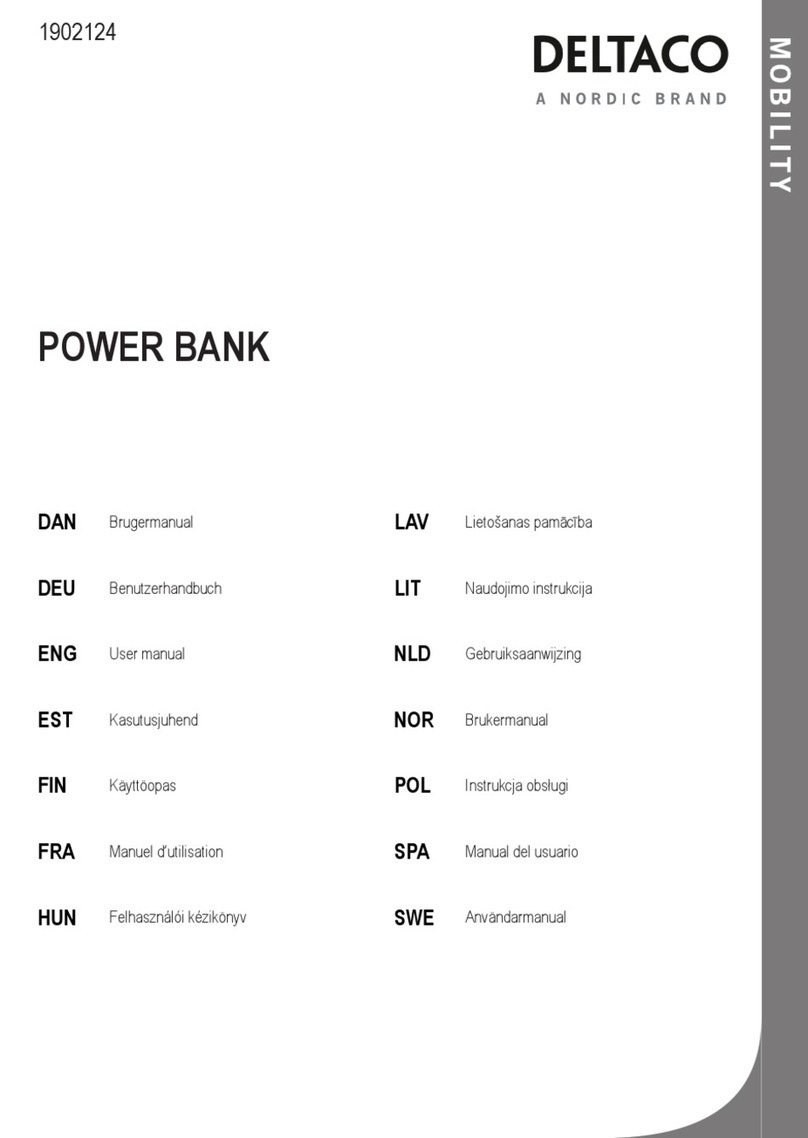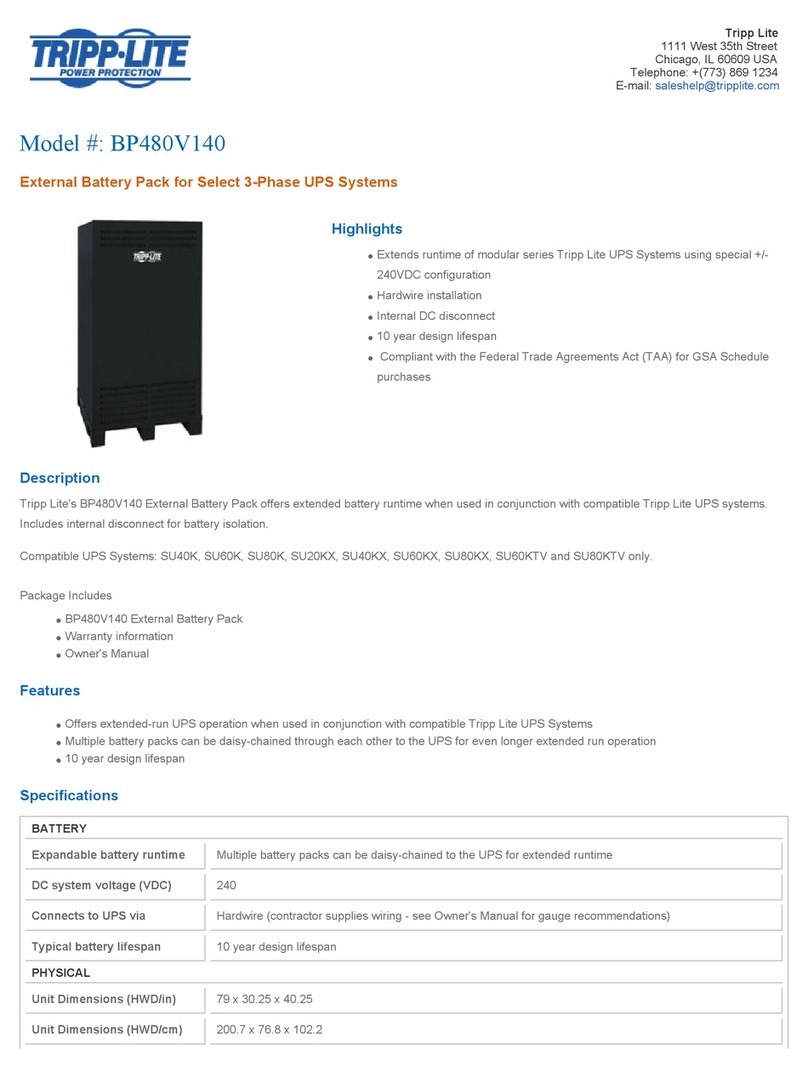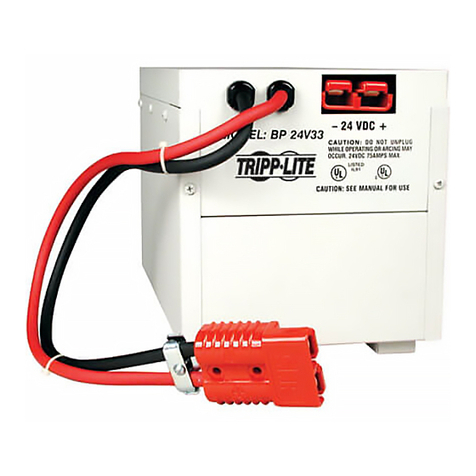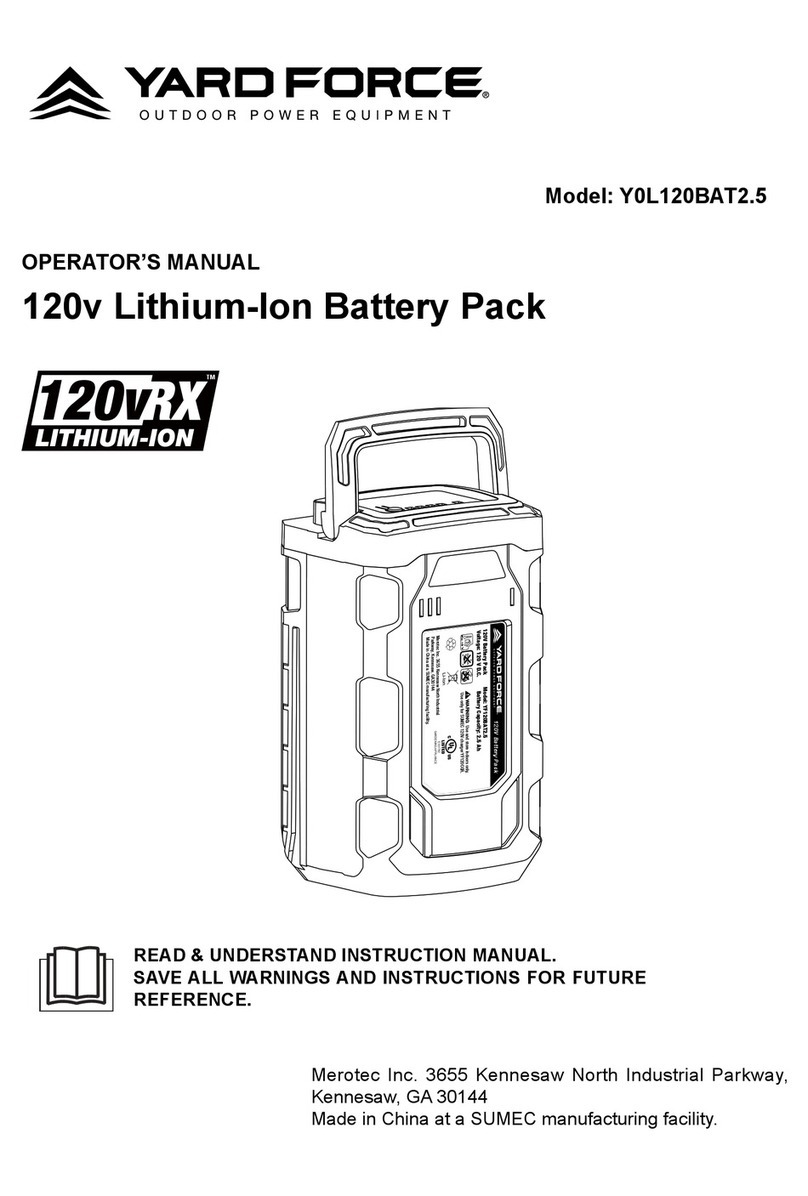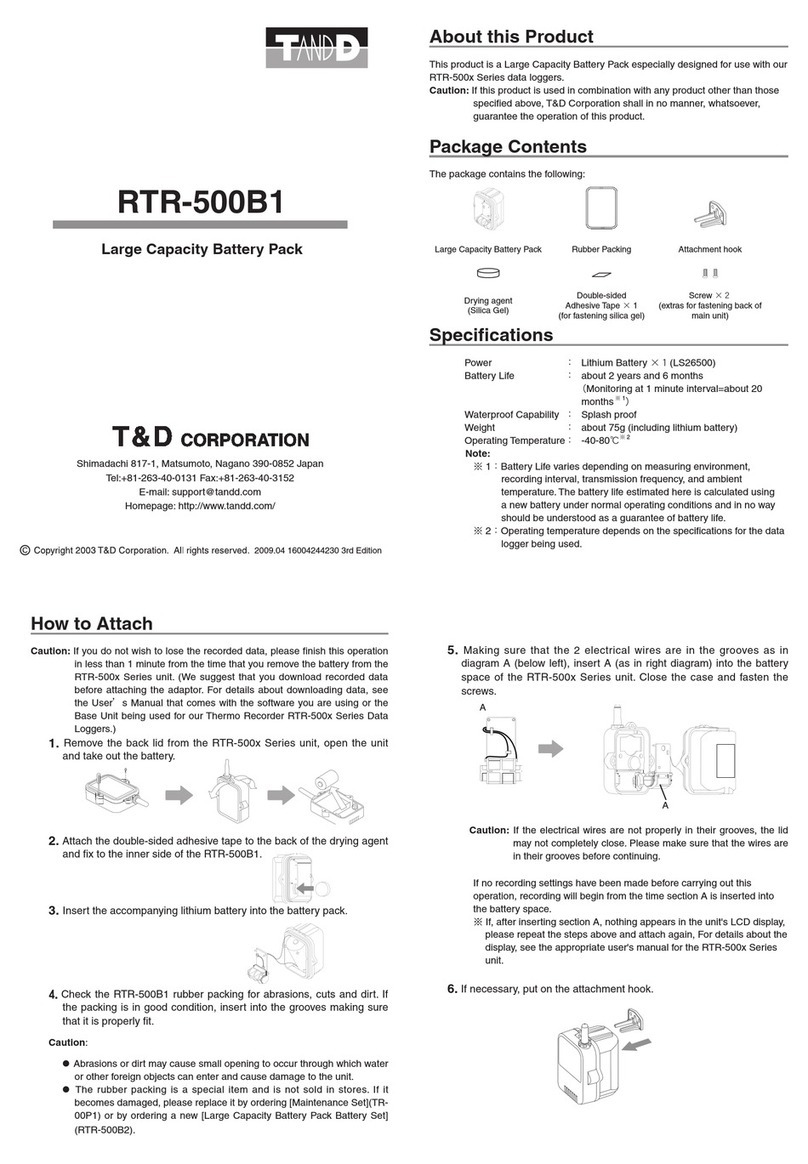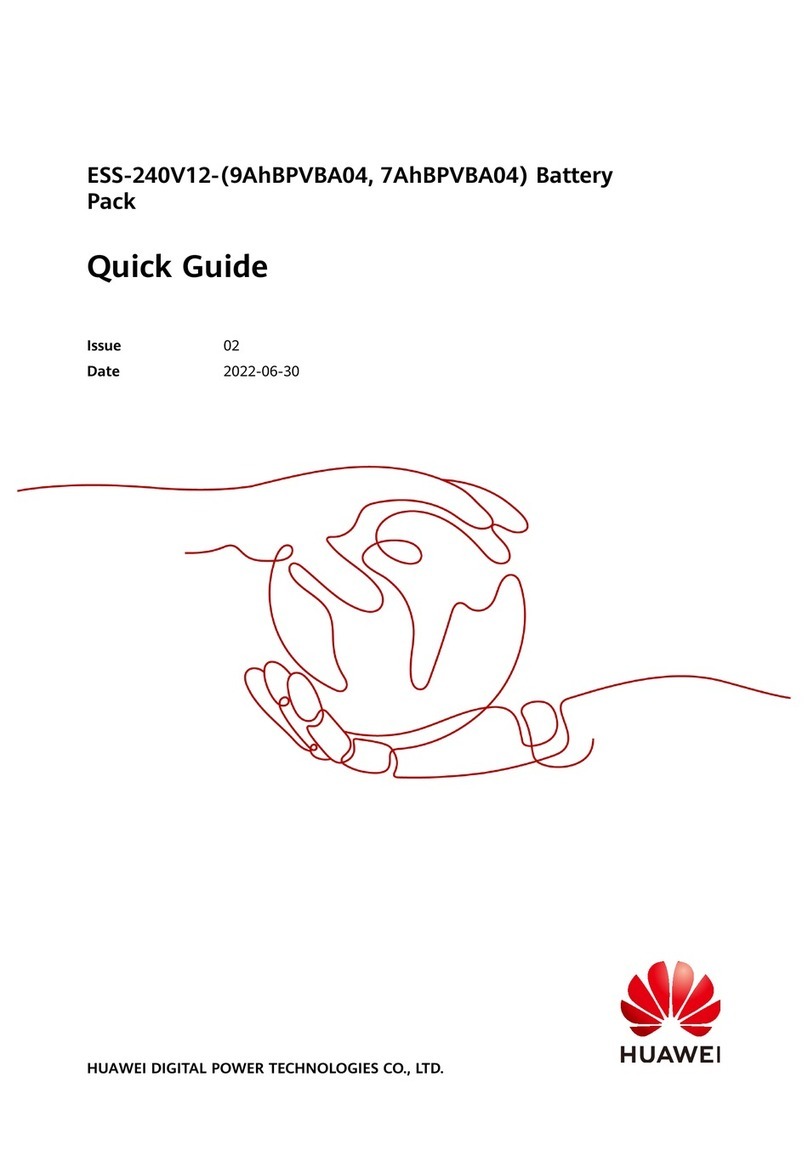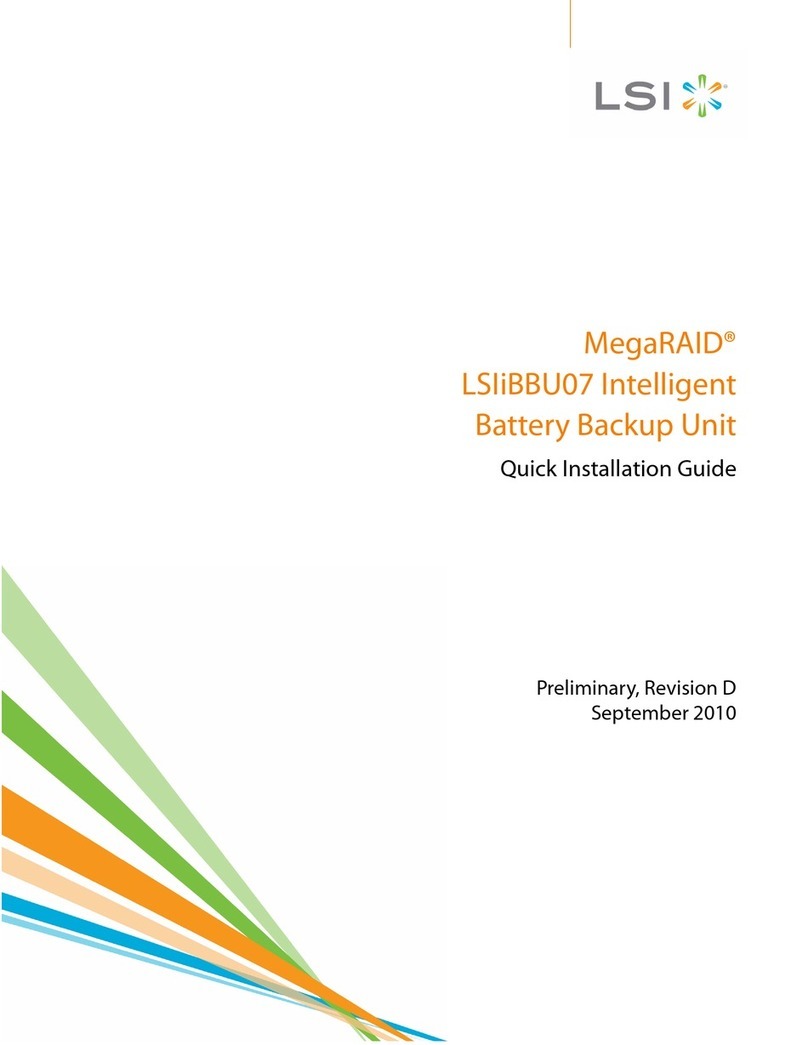EG4 EG4-LL-S User manual

User Manual
EG4®-LL-S 100AH
Rack-Mounted Battery
©2023 EG4®Electronics, LLC. All rights reserved.
Version 2.1.1 | Information subject to change without notice.
Scan this QR code to
navigate to our
downloads page for
the latest manuals
and spec sheets!

Table of Contents
1 Safety........................................................................................................................................................................ 2
1.1
Safety Instruction ............................................................................................................................................. 2
1.2
Important Safety Notifications ......................................................................................................................... 2
2 Brief Introduction ..................................................................................................................................................... 4
2.1
Product Description.......................................................................................................................................... 4
3 Battery Overview...................................................................................................................................................... 4
3.1
System Connections ......................................................................................................................................... 4
3.2
Overview of System Components..................................................................................................................... 5
3.2.1 Battery Diagram ....................................................................................................................................... 6
3.2.2 Emergency Stop (RSD, ESS Disconnect) ................................................................................................... 7
4 Installation................................................................................................................................................................ 8
4.1
Packaging List and Placement........................................................................................................................... 8
4.2
Location Selection and Installation................................................................................................................... 8
4.2.1 Storage ..................................................................................................................................................... 8
4.2.2 Requirements for Installation................................................................................................................... 9
4.2.3 General Installation ................................................................................................................................ 10
4.2.4 Installation in EG4® Battery Rack............................................................................................................ 11
4.3
Battery Communications ................................................................................................................................ 12
4.3.1 Connecting multiple batteries in parallel ............................................................................................... 12
4.3.2 Communication Cable Pinout and DIP Switch ID Tables......................................................................... 12
4.4
Installing with Different EG4 ® Battery Models .............................................................................................. 14
5 Battery Operation................................................................................................................................................... 15
5.1
LCD Screen...................................................................................................................................................... 15
5.1.1 Button description.................................................................................................................................. 15
5.1.2 Waking up the LCD screen...................................................................................................................... 15
5.1.3 Cell Information...................................................................................................................................... 16
5.1.4 Temperature Information....................................................................................................................... 16
5.2
Communication Protocol Selection ................................................................................................................ 17
5.2.1 Protocol Change/Selection Procedure ................................................................................................... 17
5.3
BMS Tools Installation and Interfacing ........................................................................................................... 18
5.3.1 Downloading and Installing BMS Tools................................................................................................... 18
5.3.2 Interfacing with BMS Tools .................................................................................................................... 21

6.3.2 Interface menu definition....................................................................................................................... 22
5.4
Battery Charging............................................................................................................................................. 24
5.4.1 Charge cycle ...............................................................................................Error! Bookmark not defined.
6 Troubleshooting, Maintenance & Disposal ............................................................................................................ 24
6.1
Introduction to the BMS ................................................................................................................................. 24
6.1.1 BMS Protection....................................................................................................................................... 24
6.2
Troubleshooting ............................................................................................................................................. 25
6.2.1 Alarm Description and Troubleshooting................................................................................................. 25
6.3
Battery End of Life .......................................................................................................................................... 27
7 EG4® 10 Year Limited Warranty.............................................................................................................................. 27
8 Technical Specifications.......................................................................................................................................... 28
8.1
Technical Specifications Table ........................................................................................................................ 28
8.2
Battery Performance Curves........................................................................................................................... 30

1
Abbreviations
•A — Amp(s)
•Ah — Amp hours
•AC — Alternating Current
•AHJ — Authority Having Jurisdiction
•ANSI — American National Standards Institute
•AWG — American Wire Gauge
•BMS — Battery Management System
•DC — Direct Current
•DIP — Dual In-line Package
•EG — Equipment Ground
•EGC – Equipment Grounding Conductor
•ESS — Energy Storage System
•In. lbs. — Inch Pounds
•kW — Kilowatt
•kWh — Kilowatt-hour
•LFP — Lithium Iron Phosphate
•mm — Millimeter(s)
•mV — Millivolt(s)
•NC — Normally Closed
•NEC — National Electrical Code
•NFPA — National Fire Prevention Association
•Nm — Newton meters
•NO — Normally Open
•PC — Personal Computer
•PCB – Printed Circuit Board
•PPE — Personal Protective Equipment
•PV — Photovoltaic
•RSD — Rapid Shut Down
•SOC — State of Charge
•V — Volt(s)

2
1 Safety
1.1
Safety Instruction
Before any work begins, carefully read all safety instructions, and always observe them when
working on or with the battery. The installation must follow all applicable national or local
standards and regulations. Consult with your AHJ to obtain the proper permits and permissions
before installation.
Incorrect installation may cause:
•injury or death to the installer, operator or third party
•damage to the battery or other attached equipment
1.2
Important Safety Notifications
There are various safety concerns that must be carefully observed before, during, and after the
installation, as well as during future operation and maintenance. The following are important
safety notifications for the installer and any end users of this product under normal operating
conditions.
Dangers of High Voltages and Large Current
AVERTISSEMENT: Circuits à tension élevée!
1. Do not disassemble the battery. Contact your distributor for any issues in need of
repair for proper handling instructions. Incorrect servicing or re-assembly may result
in a risk of electric shock or fire and voiding the warranty.
2. Never short-circuit DC inputs. Short-circuiting your battery may result in a risk of
electric shock or fire and can lead to severe injury or death and/or permanent damage to
the unit and/or any connected equipment.
3. Use caution when working with metal tools on or around batteries and
systems. Risk of electrical arcs and/or short circuiting of equipment can lead to
severe injury or death and equipment damage.
4. Beware of high battery current. Please ensure that the battery module breakers
and/or on/off switches are in the “open” or “off” position before installing or working on
the battery. Use a voltmeter to confirm there is no voltage present to avoid electric
shock.
5. Do not make any connections or disconnections to the system while the
batteries are operating. Damage to system components or risk of electrical shock
may occur if working with energized batteries.
6. Make sure the battery and rack are properly grounded.
7. An installer should make sure to be well protected by reasonable and professional
insulative equipment [e.g., personal protective equipment (PPE)].
8. Before installing, operating, or maintaining the system, it is important to inspect all
existing wiring to ensure it meets the appropriate specifications and conditions for
use.
9. Ensure that the battery and system component connections are secure and proper to
prevent damage or injuries caused by improper installation.

3
Warning
1. All work on this product must be carried out by qualified personnel. To
reduce the risk of electric shock, do not perform any servicing other than that
specified in the operating instructions unless you are qualified to do so.
2. Read all instructions before commencing installation. For electrical work, follow all local
and national wiring standards, regulations, and these installation instructions. All wiring
should be in accordance with the National Electrical Code (NEC), ANSI/NFPA 70.
3. The battery and system can connect with the utility grid only if the utility provider
permits. Consult with your local AHJ before installing this product for any additional
regulations and requirements for your area.
4. All warning labels and nameplates on this battery should be clearly visible and must
not be removed or covered.
5. The installer should consider the safety of future users when choosing the battery’s
correct position and location as specified in this manual.
6. Please keep children away from touching or misusing the battery and relevant systems.
7. Battery is designed to stop charging at 32°F. If charging current is observed when the internal
battery temperature is below 32°F, disconnect battery immediately and consult manufacturer.
DISCLAIMER
EG4® reserves the right to make changes to the material herein at any time without notice. You
may refer to the EG4® website at www.eg4electronics.com for the most updated version of our
manual.

4
2 Brief Introduction
2.1
Product Description
The EG4® 48V-LL-S rack-mounted lithium batteries are ideal for low-voltage energy storage
system applications. These batteries use lithium iron phosphate cells with the highest safety
performance and a battery management system (BMS) that can monitor and collect voltage,
current, and temperature of each cell within the module in real time. The BMS also contains a
passive balance function and an advanced battery control method, both of which can help
improve the performance of the battery pack. For enhanced security, the battery has two
onboard fire-extinguishing modules.
3 Battery Overview
3.1
System Connections
Below is an example system connection diagram with an EG4 charge controller and EG4 inverter:
Note: During single-battery operation, the battery terminals can directly connect to the equipment.

5
3.2
Overview of System Components
The battery module is made up of sixteen "AAA" grade cells, a BMS, a housing, a breaker, and
wire. It can be installed in a standard 19-inch cabinet and communicates with external devices
via CAN/RS485 as well as with other EG4® batteries via RS485. The modules can be
connected in parallel to meet expansion requirements. Inter-battery communications support a
maximum of 64 modules for the 6 DIP switch model or 16 modules for the 4 DIP switch model.
*This image is for display
purposes only. Do not open your
battery! Doing so without proper
authorization will void your
warranty
This unit contains
two aerosol fire-
fighting modules
inside the battery
for safety
measures.*

6
3.2.1 Battery Diagram
No. Item Description Remarks
1 Positive terminal M6 bolt (x2)
2 RS485 port RS485 communication interface
Pin 1 & Pin 8 ‒RS485_B
Pin 2 & Pin 7 – RS485_A
3 CAN port CAN communication interface
Pin 4 – CAN_H
Pin 5 – CAN_L
4 ALM LED Alarm status LED
5 RUN LED Operation status LED
Always on if system is
running
6 Reset button Emergency reset
7 ON/OFF button Turns BMS on/off
8 Circuit breaker Shuts down power supply
9 Negative terminal M6 bolt (x2)
10
Battery-Comm
ports
Parallel battery communication
port
Pin 1 & Pin 8 ‒RS485_B
Pin 2 & Pin 7 – RS485_A
11 SOC LED State of charge LED
4 green lights = full
charge
12
ID Board DIP switch board for BMS May be 4 or 6 DIP
13 LCD Display Shows battery information
14 Ground screw Provides safe route for grounding
15 Handle For carrying/handling battery

7
3.2.2 Emergency Stop (RSD, ESS Disconnect)
The optional ESS disconnect can
be used to shut down all batteries
and inverters (if equipped) with
the push of a button.
This integrated safety feature ties
directly into the battery
communication system via an
open Battery-Com port using a
standard Cat-5/6 ethernet cable.
Pins 3 & 6 are used to
communicate the emergency
stop information to the batteries
once the stop button is pressed.
If the inverter is equipped with
rapid shut down (RSD)
capabilities, the emergency stop
feature can be used to initiate
this function. Check with your
AHJ and NEC code for
compliance.

8
4 Installation
4.1
Packaging List and Placement
Packaging List
When the product is unpacked, the contents should match those listed below:
4.2
Location Selection and Installation
4.2.1 Storage
There are a few steps you can take to ensure that batteries are stored safely and in a state that
will ensure they are not damaged during storage. These are detailed below.
Battery State
The state of the battery when placed into storage will affect how long it can be stored as well as
the battery’s condition when it is brought out of storage. EG4® recommends that each battery is
brought to a 100% SOC (state of charge) before placing it in storage. Lithium iron phosphate
batteries will lose a certain percentage of their total charge while in storage, depending on how
long they are stored and the conditions they are stored in. We recommend recharging the
batteries after 8 – 9 months in prolonged storage.
Environmental Factors
The environment you store your EG4® battery in can greatly affect the health of the battery. For
best results, the temperature should remain moderate, between 41°F and 68°F (5°C and
20°C). Keep the battery away from locations where it may get wet or locations with high
humidity (>55%). Store the batteries away from combustible materials.
(1) EG4-LL
Battery Module
(1) Inter-battery
Communication
Cable
(1) ea. 6-AWG
Pos. and Neg.
Connection
Cables
(4) M6-1.0
Terminal Bolts
(1) Battery to PC
Communication
Cable

9
4.2.2 Requirements for Installation
Warning
•Do not put EG4® 48V-LL-S batteries in series. The BMS and internal
components are not designed to handle this setup, which could cause the modules
to fail.
•Avoid exposing batteries to conductive materials, such as water, strong oxidizers,
and strong acids.
•Avoid putting batteries in direct sunlight or on extremely hot surfaces.
•Keep all flammable materials out of the working area.
•Use caution when handling batteries and/or battery-powered devices to avoid
damaging the battery casing or connections.
•Before using batteries, inspect them for signs of damage. Never use damaged or puffy
batteries. Please contact the distributor if a battery is received in this state or
experiences this issue.
Important
Never position the battery upside down or face down!
Acceptable Acceptable
Best

10
4.2.3 General Installation
Cable size
Min.
Insulator Voltage Torque Value Max Recommended
Distance
2 AWG 600V 60 in. lbs. (7 Nm) 15 ft.
Note: This chart applies for a 100A continuous output (one battery). Where ambient
temperature is above 86°F (30°C), cable size must be increased according to NEC 310. The 6
AWG cable included in the package is intended only for the connection from the module
to an EG4® battery rack busbar.
Danger
When adding or removing a battery from any rack, cabinet, or busbar, turn off ALL batteries, and use a
voltmeter to confirm there is no voltage present. This will prevent users from encountering live
(powered) busbars by accident. Failure to do so can result in severe injury and/or death.
Tools needed for installation
The tools required may vary depending on how you choose to mount your battery. Typically, the
following items are needed to install the battery into an EG4® battery rack solution or general
racking.
1. 10mm socket and ratchet
2. Phillips head screwdriver
3. Torque wrench
4. M6-1.0 terminal bolts (included in package)
Connecting cables to the battery terminals and busbars
EG4® recommends you only use a properly sized (amp rated) busbar to parallel batteries
together. Paralleling via the battery terminals may cause inconsistent charging and discharging
issues in the bank.
1. Identify the positive and negative terminals of your battery. These are labeled and color
coded (red for positive, black for negative).
2. Verify you have all hardware to attach the cable properly. Check to ensure the bolt
threads fully into the terminal and can be tightened to the proper torque.
3. Connect the cables to your battery terminals by removing the M8 terminal bolts,
inserting them through the eyelet of the proper cable, and reseating the bolt into the
terminal block to the correct torque.
4. Connect the positive battery cables to your positive busbar by removing the bus bolts,
inserting them through the eyelets of the proper cable, and reseating the bolt into the
busbar to the proper torque value. Repeat with all negative cables.
5. DO NOT finger tighten the battery terminal bolts. They require a specific torque to
ensure they do not loosen during operation. Failure to properly tighten the terminal
bolts can result in serious damage and will void your warranty.

11
4.2.4 Installation in EG4® Battery Rack
1. Insert the battery into the rack slot, beginning with the top slot and progressing downward.
Slide in until the battery is firmly seated in the rack.
2. Use the included 6 AWG power cable to
connect each battery to the busbar.
3. DO NOT finger tighten the battery or busbar
terminal bolts. Both require a specific torque
[60 in. lbs. (7 Nm)] to ensure they do not
loosen during operation. Failure to properly
tighten the terminal bolts can result in
serious damage and will void the warranty.
4. Clearly identify the location of the system’s
positive and negative terminals—red to the
positive terminal and black to the negative
terminal—to ensure no connection errors.
Then connect to the equipment or switch
terminals.
Grounding
You can attach a grounding wire from the
rack/cabinet to an equipment grounding
conductor, then terminate the EGC at a
grounding electrode.
Warning
Do not ground rack/cabinet or door
to negative or positive bus bars!
In this image, there are 6 EG4®-LL-S 48V
100Ah batteries wired in parallel. This battery
bank still maintains the appropriate 48V needed
for a system. However, the Amp hour rating of
this bank has increased to 600Ah. In addition,
the potential output amperage of the rack
increases.
Size main battery cables appropriately!
Refer to an NEC approved ampacity chart
for specifications.

12
4.3
Battery Communications
Each EG4® battery is designed with you in mind, displaying as
much information as possible in the simplest manner. EG4®
Electronics includes the option of connecting the battery to PC
software to monitor the module status. This allows you to see and
understand exactly what the battery is doing as well as
troubleshoot if problems arise.
When a single battery is used, it will communicate directly with the
system via the RS485 or CAN port. The battery will connect via a
properly pinned battery communications cable (not included).
The communication cable from battery to battery is a
standard Cat5 cable. If you need a longer cable to reach from
your system to your master battery and would like to create
your own, please refer to the Communication Cable Pinout
Table in Section 5.3.2
4.3.1 Connecting multiple batteries in parallel
1. Ensure all battery breakers and BMS are OFF.
2. Set the address code of each battery according to the
DIP Switch ID Table (see Section 5.3.2: DIP Switch ID
Table), making sure there are no duplicate addresses.
3. Establish communication between the batteries via the
“Battery-Comm” ports starting with the right port on the
last battery address and terminating on the left port of
the host.
4. The battery with DIP Switch ID 1 (referred to as the
host) connects to the system via communication
cable using the RS485 or CAN port. (See image to
the right)
5. Power on each battery breaker and BMS ON/OFF switch
one at a time beginning with the host battery.
4.3.2 Communication Cable Pinout and DIP
Switch ID Tables
EG4®-LL-S batteries interface with an inverter by designating a
“Host” battery (DIP switch ID No. 1). The ID code range is 1‒64 (1
–16 for the 4 DIP model), and the communication mode can
support up to 64 modules in parallel (16 with the 4 DIP model).
Remember
If you have multiple batteries, all DIP switch settings must
be different from each other. This allows all equipment to
see each battery in the bank separately.

13
Pi
n
Description
1 RS485-B
2 RS485-A
3 CAN Ground
(optional)
4 CAN High
5 CAN Low
*Pinouts are for battery side, please refer to your
system manual for pinout configuration on
system end.
Communication
Cable Pinout & Table*
DIP
switch ID table – 4 Pin
DIP
switch ID table – 6 Pin
RS485-B RS485-A CAN High CAN
Low

14
4.4
Installing with Different EG4 ® Battery Models
EG4® LL-S batteries can communicate with all EG4 ® 48V server rack modules. However, you
will need to apply the proper firmware to any LL-V1 and/or Lifepower4 modules before
installation. Please visit http://www.eg4electronics.com/downloads for the latest firmware.
To system
1. Always use the newest model of
LL at the top of your rack as this will
need to be the battery that
communicates with the system.
This battery is also known as the
master and will need to have ID
number 1.
2. When installing the batteries,
ensure that the same models are
grouped together in the bank.
This allows for communication to
flow between the batteries
consistently.
3. After installing the batteries into the
rack, refer to the DIP Switch ID
table to assign the address code of
the bank in numerical order,
beginning with the master and
progressing among the different
models.
The image on the left shows a bank
with the following EG4® modules:
1. LL- S (6 DIP) [ID-1]
2. LL- V2 (6 DIP) [ID-2]
3. LL- V2 (4 DIP) [ID-3]
4. LL- V2 (4 DIP) [ID-4]
5. LL- V1 [ID-5]
6. Lifepower4 [ID-6]

15
5 Battery Operation
5.1
LCD Screen
Each module has a built-in HD LCD touch screen used to display important information about
the cells including voltage, current, temperature, SOC, and others.
5.1.1 Button description
There are 4 function buttons below the display with detailed descriptions, as shown in the table below.
5.1.2 Waking up the LCD screen
Press any key to wake up the screen when the power is on, and the information will be shown
on the display.
Main Page Information
No.
Module Description
1
Battery
2
Name
3
Status
4
Voltage
5
Current
6
System Date
No. Description
1Up
2Down
3Return
4Enter
1.
2.
3.
4.
5.
6.

16
5.1.3 Cell Information
Page 1 Page 2
5.1.4 Temperature Information
Check individual cell
voltage by pressing the
“Enter” button on the main
page of the LCD screen
(shown in mV). There are 2
pages. Pressing “Up” and
“Down” changes the page.
Press "Enter" on the Cell
Voltage page to view the
temperature information of
the PCB and the cells
(Shown in °C)

17
5.2
Communication Protocol Selection
Remember
Only the host battery (Address 1) needs to be set to the inverter protocol; all other batteries
must have unique addresses starting at address 2 and ascending in chronological order. You
must connect the CAN/RS485 port of the host battery to your inverter’s (or communication
device’s) BMS communication port.
5.2.1 Protocol Change/Selection Procedure
1. Power off all battery DC breakers and BMS power buttons. Ensure that the voltage
between positive and negative busbars is 0V.
2. The inverter protocol can only be changed with the host battery
temporarily set to address 64 (all dials right) or address 16 for
the 4 DIP switch model (all dials down). After the dial is
changed, restart the battery (with only the BMS power button)
for the settings to take effect. (See image on right.)
3. On the host battery, press and hold the “Return” key for 5 seconds to enter the
“Protocol Setting.”
4. Select the corresponding RS485 program or CAN program, and press Enter.
4
5. Press the “Return” key to return to the main interface.
6. Change the host DIP switch address back to address 1. (See image on right.)
7. Power cycle the host battery, and the BMS will correspond to the protocol selected.
CAN
Protocol
Inverter
P01-GRW
Growatt
P02-SLK
Sol-Ark
P03-DY
Deye
P04-MGR
Megarevo
P05-VCT
Victron
P06-LUX
Luxpower
RS485
Protocol
Inverter
P01-EG4
EG4
P02-GRW
Growatt
P03-LUX
Luxpower
P04-SCH
Schneider
Other manuals for EG4-LL-S
1
Table of contents
Other EG4 Batteries Pack manuals
Popular Batteries Pack manuals by other brands
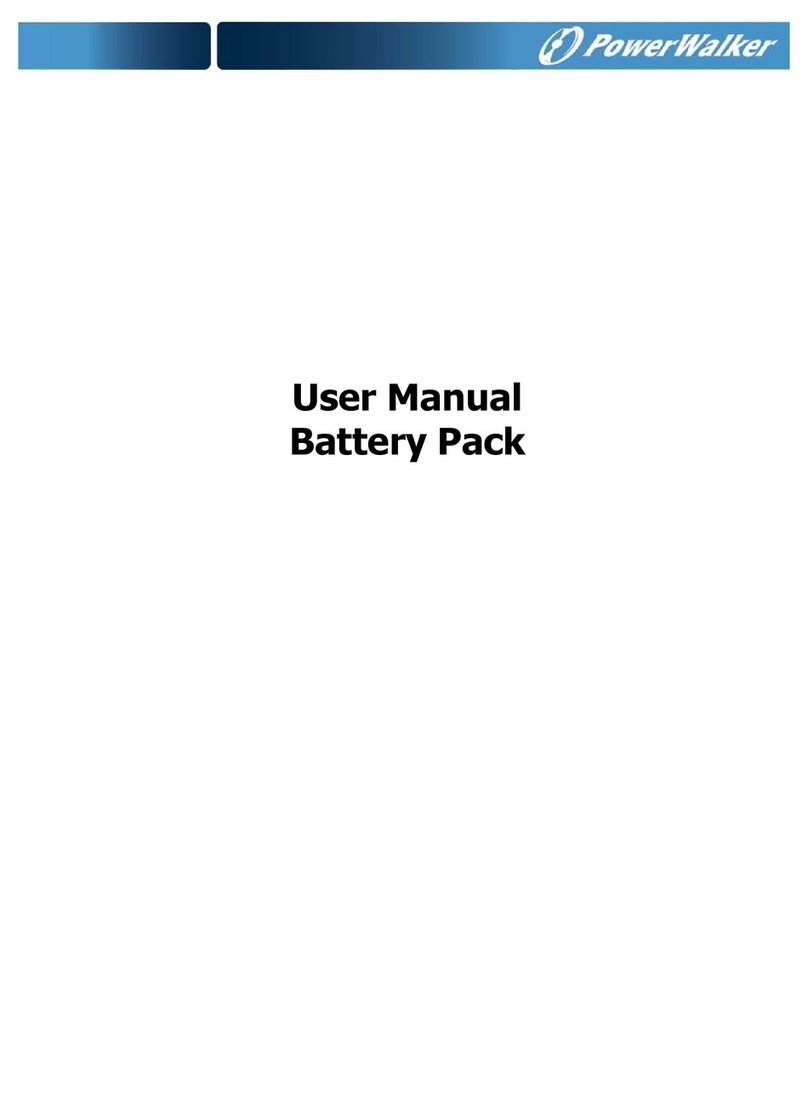
PowerWalker
PowerWalker bP T2882T-48x9Ah user manual

Tripp Lite
Tripp Lite BP480V40C Specification sheet
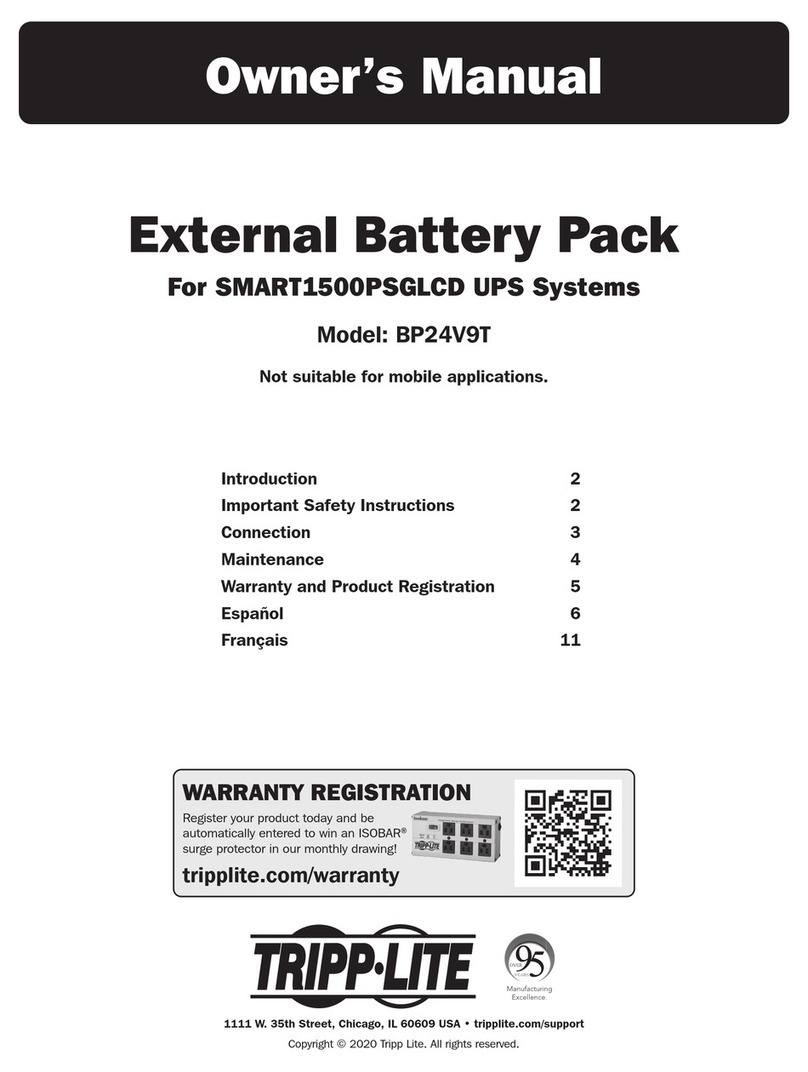
Tripp Lite
Tripp Lite BP24V9T owner's manual
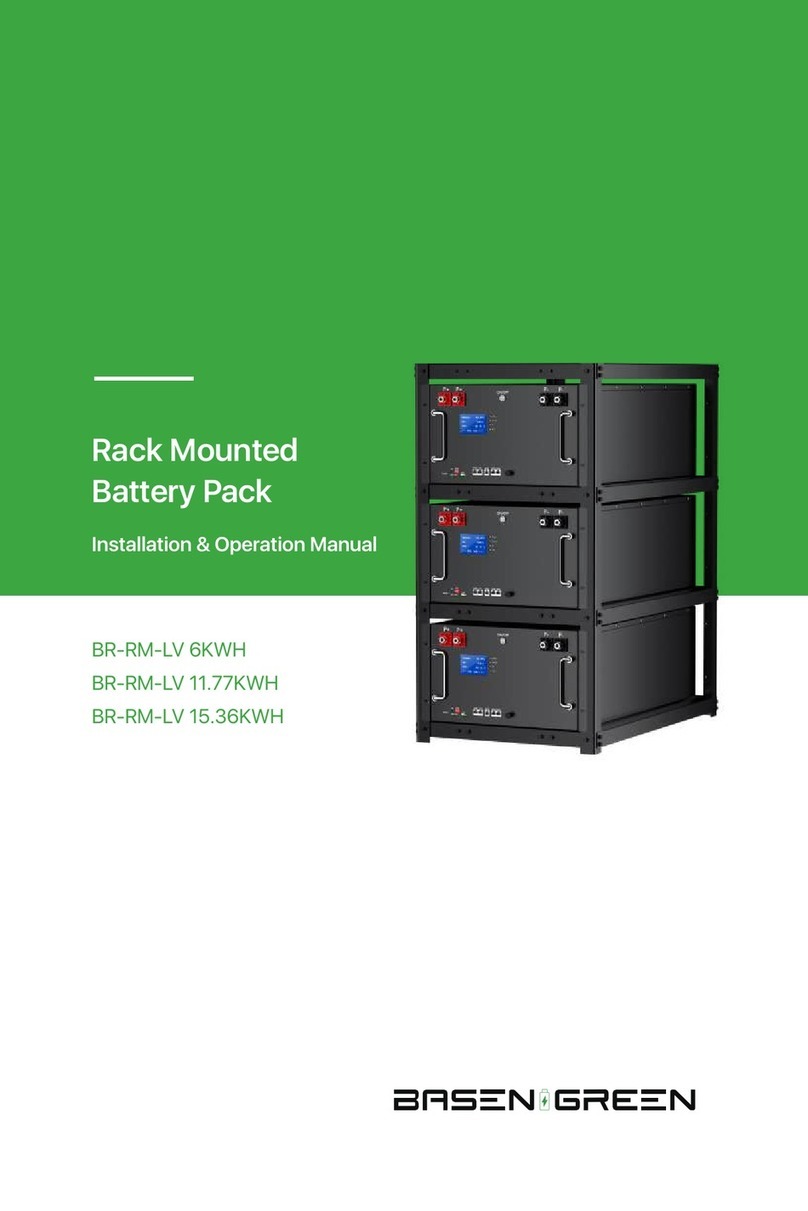
BASENGREEN
BASENGREEN BR-RM-LV 6KWH Installation & operation manual
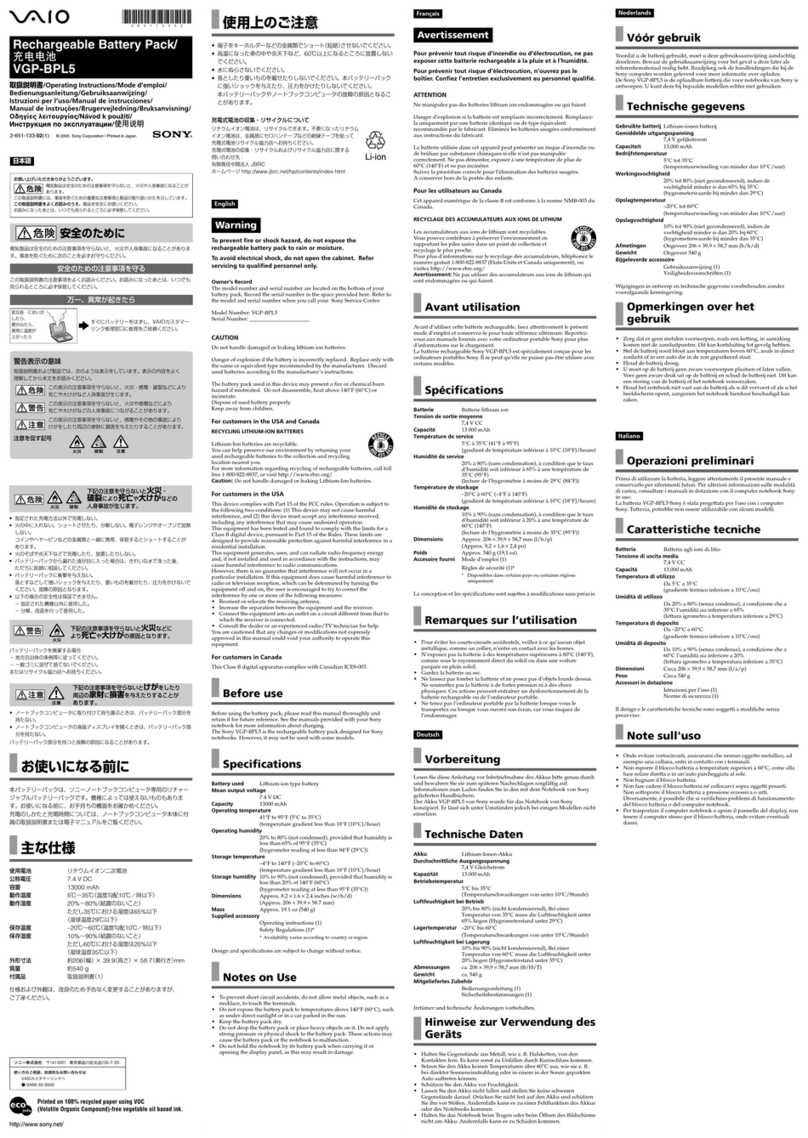
Sony
Sony VAIO VGP-BPL5 operating instructions
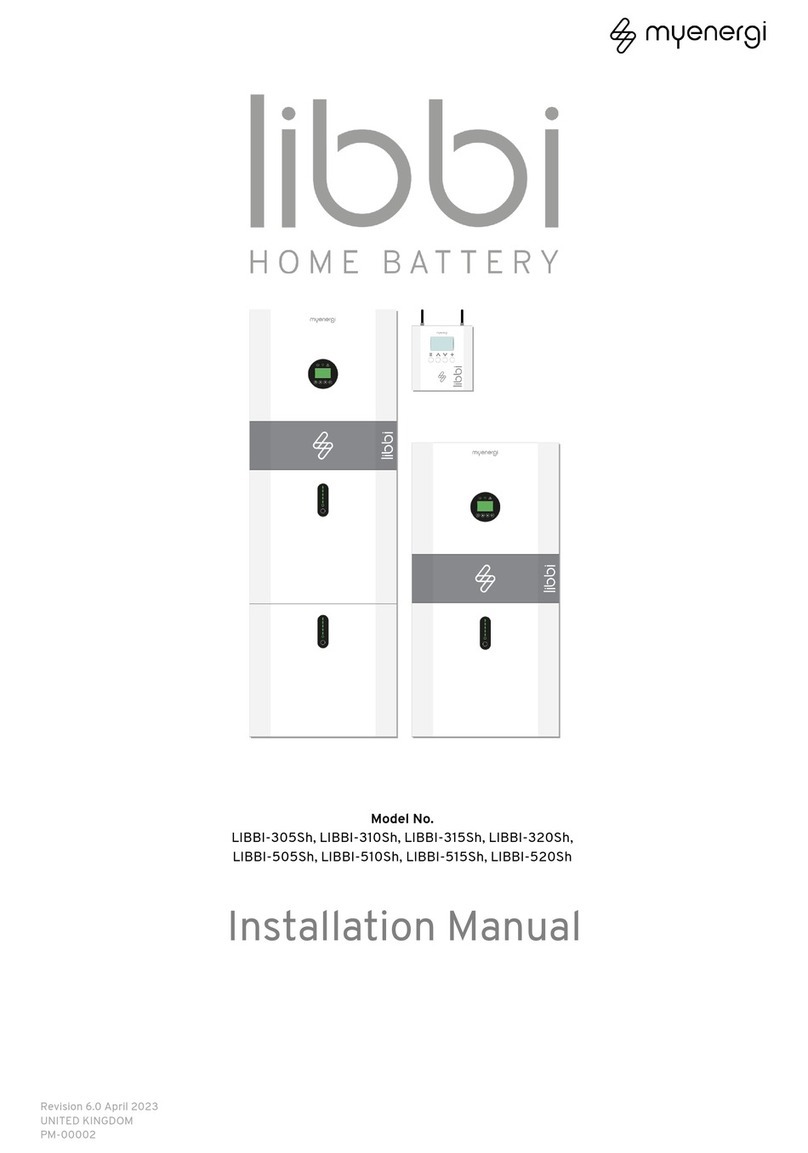
Myenergi
Myenergi LIBBI-305Sh instruction manual
